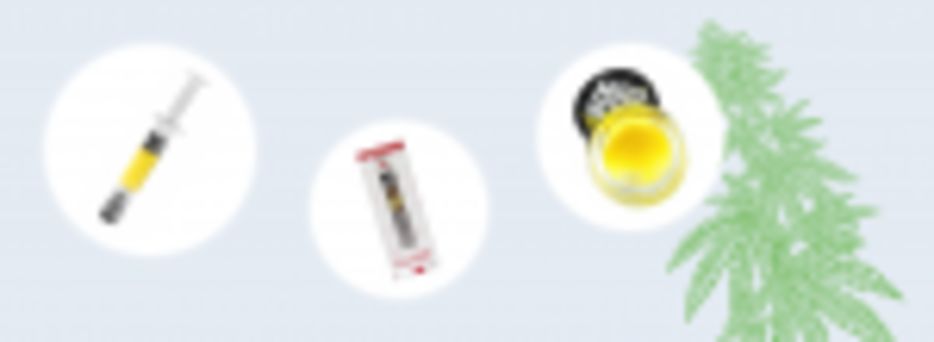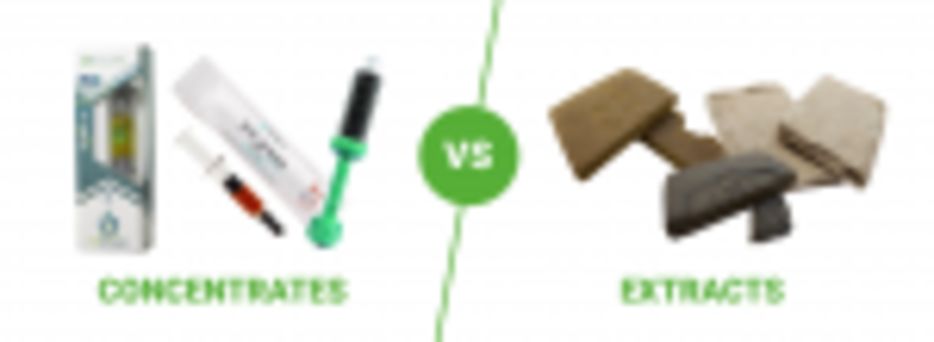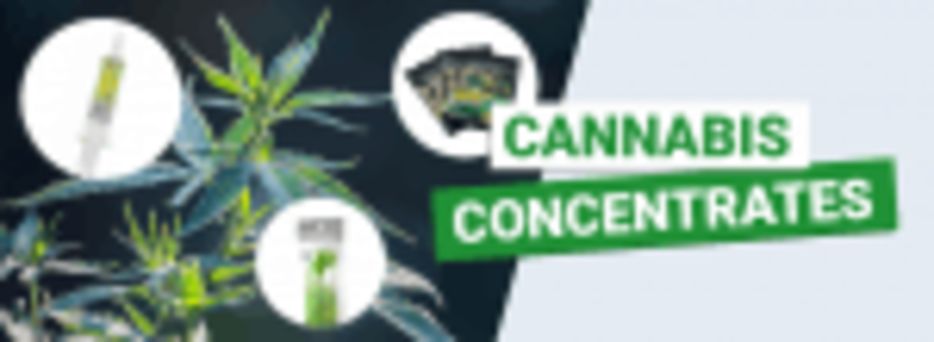Over the last decade, smokers have seen the meteoric rise of a new way to consume cannabis. Cannabis concentrates (also known as dabs, hash oil, and a slew of other names) have exploded in popularity during the late 2010s, and have rapidly become one of the most popular and efficient ways to smoke weed. But while more smokers than ever before are dabbing, few of them actually understand how cannabis concentrates are made.
Making dabs is an extremely technical process that requires specialized lab gear and a solid understanding of organic chemistry. Additionally, making cannabis concentrates is dangerous. The process requires utilizing volatile solvents, and without proper safety equipment and training it’s easy to cause unintentional explosions. As a result, this page isn’t exactly a step-by-step guide to making weed concentrates. Instead, it’s a cursory overview of the cannabis extraction process for curious concentrate consumers.
What Are Marijuana Concentrates?

Concentrates are the most processed, refined cannabis extracts available today. In the simplest terms, a concentrate is a goop made of all the stuff from a weed plant that gets you high. Concentrates are slurries of organic compounds like terpenes and cannabinoids with all the plant matter removed.
As a result, concentrates can have significantly higher percentages of THC than flowers or even extracts like hash. While marijuana flower usually clocks in around 25 percent THC and extracts max out around 60 percent, some concentrates can be as high as 90 percent THC or more. That makes dabbing the most powerful way to smoke.
Concentrates can come in one of several forms. Some may appear as a solid, brittle slab, referred to as shatter. Others like badder or sap feature a thick, frosting-like constancy. Still more, like sugar, appear as a tan, semi-granular goop. In fact, some concentrates have multiple consistencies, with crystals of pure THC floating in a sea of viscous, amber-hued terpene oil.
How Concentrates Are Made
Making weed concentrates is a complex process that requires multiple steps. An extractor starts by harvesting and freezing plant material. Then, they proceed to spray harvested weed flowers with a solvent to that binds to cannabinoids and terpenes. Finally, the extractor purges the solvent, leaving nothing behind but weed concentrate.
Harvest Cannabis Plants
Every cannabis concentrate comes from the flowers of marijuana plants. Harvesting plants for concentrates is actually significantly more involved than harvesting them for buds. First, harvesters cut the plant down and remove all of the buds from the stems.
At this point, time is critical. The fresher the buds are, the better the extract will be. As a result, many extractors throw bagged nugs into a freezer with either liquid nitrogen or dry ice. The goal is to freeze the flowers as quickly as possible, with an ideal temperature around -40 degrees in both Fahrenheit and Celsius. Freezing nugs like this preserves their freshness and is the first step in making a top-quality concentrate. It also gives an extractor more wiggle-room with the timing of their harvests.
Blast Flower with Solvent
The next – and most important – step for an extractor is to use the solvent to extract organic compounds like terpenes and cannabinoids from cannabis plant matter. Like we mentioned earlier, butane, CO2, and ethanol are three of the most common solvents. The most common way to blast plant matter is by packing it into a glass tube and spraying it with the solvent. The resulting wet goo is a slurry containing cannabinoids and the solvent. After blasting weed with a solvent, the leftover plant matter can be thrown away.
Purge the Solvent
The final step in making a concentrate involves removing the solvent from the cannabinoid and terpene slurry. There are several ways to do this, but the most common way is by using heat to evaporate the solvent from the mixture. This method involves putting the slurry in a glass container above a hot plate. The heat from the plate will cause the solvent to evaporate, bubbling up into the air while leaving the cannabinoids and terpenes behind. Once the bubbling stops, the solvent has been fully purged. The final product is a concentrated extract of cannabinoids and terpenes.
Concentrates vs Extracts

The terms “concentrate” and “extract” are often used interchangeably. However, there are some differences between extracts and concentrates. It’s similar to squares and rectangles – all squares are rectangles, but not all rectangles are squares. All concentrates are extracts, but not all extracts are concentrates. The term “extract” refers to any form of THC with plant matter removed, and can include things like hash and kief.
One key trait of all concentrates is that they feature solvents as a key component of their production. One of the most common solvents in weed concentrates is butane, but carbon dioxide and ethanol are also frequently used. Don’t panic, though – that doesn’t mean you’re smoking butane when you dab. Instead, extractors purge these solvents out of a concentrate before it’s packaged for sale.
While concentrates and other extracts like hash share some similarities, they’re not exactly the same. The main difference between concentrates and extracts is the use of solvents during the production process. Concentrates like hash oil require solvents, while extracts like hash don’t.
Final Words
This is just a general overview of the concentrate-making process. It’s not meant to be used as a recipe for people to make their own concentrates. If you want to smoke concentrates, making them yourself isn’t the way to do it – it’s dangerous, expensive, and time-consuming. Instead, buy concentrate from a vendor that you trust.
At MMJDirect, we have dozens of different styles and strains of marijuana concentrates. Ranging from distillates to full-spectrum oil, our online store is one of the easiest ways to buy weed concentrates online. Just select what products you want and we’ll send you a payment confirmation. Once you pay, we’ll ship your selection directly to your home. We’ll even cover shipping on orders more than $150. To learn more, check out our complete inventory of concentrates in our online store.




